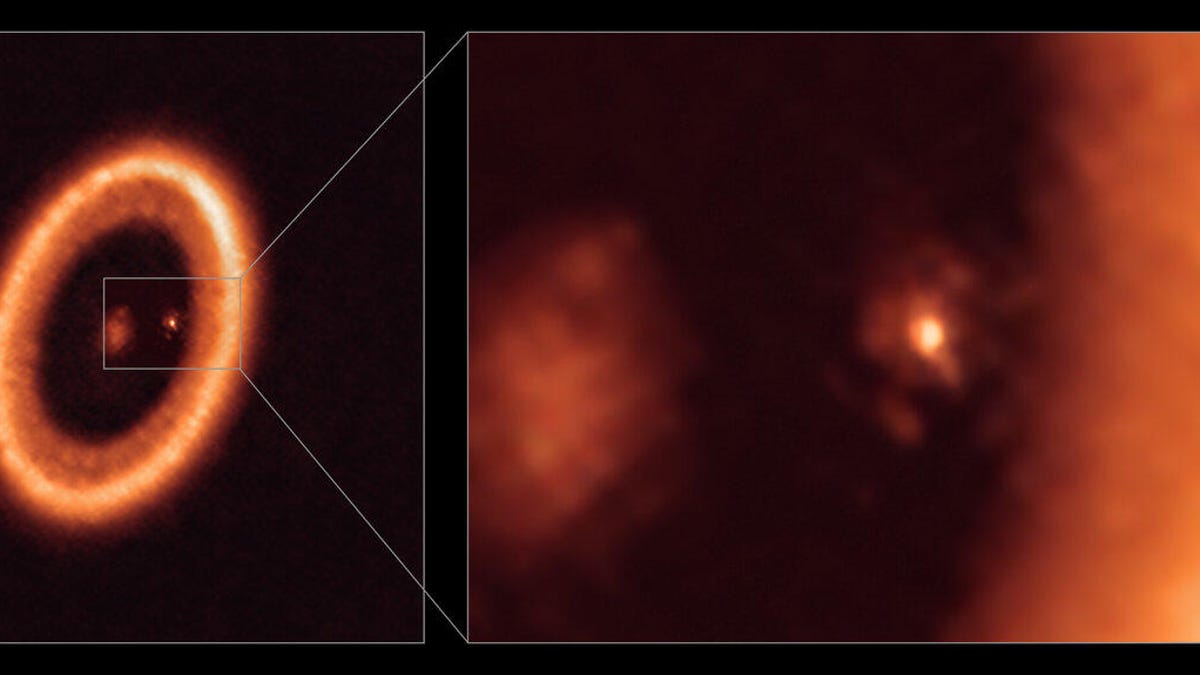Astronomers see 'moon-forming disk' around distant exoplanet for the first time
This is where baby moons come from.
Here on Earth, we're very familiar with what a fully formed moon looks like. But what do they look like when they're just a gleam in a planet's eye? A remarkable new image shows a moon-forming disk of material around a Jupiter-like planet 400 light-years away. It's giving scientists insights into the births of moons.
The research marks what the European Southern Observatory called Thursday the "first clear detection of a moon-forming disk around an exoplanet." Exoplanets are planets located outside of our own solar system.
The circumplanetary disk surrounds exoplanet PDS 70c and is made up of gas and dust. The material in the disk has enough mass to form three satellites the size of our own moon. The discovery was made possible by the Atacama Large Millimeter/submillimeter Array, aka ALMA, a powerful telescope in Chile.
"Our work presents a clear detection of a disk in which satellites could be forming," said Myriam Benisty, lead author of the new study published in The Astrophysical Journal Letters on Thursday. "Our ALMA observations were obtained at such exquisite resolution that we could clearly identify that the disk is associated with the planet and we are able to constrain its size for the first time," she adds.
This ALMA image shows a moon-forming disk surrounding PDS 70c, a young Jupiter-like gas giant nearly 400 light-years away. This close-up gives a better look at the planet and surrounding disk of gas and dust.
The findings have implications for understanding planet formation. Scientists think planets form in circumstellar disks of material around stars as the material gathers together. Those planets can get their own circumplanetary disk and that material can collide and collect together to make moons.
There's still a lot of mystery around the planet and moon formation process. "In short, it is still unclear when, where, and how planets and moons form," said ESO research fellow and study co-author Stefano Facchini.
Astronomers have discovered over 4,000 exoplanets, but PDS 70c and its companion planet PDS 70b (which doesn't have a moon-forming disk of its own) are special in that the planets are still forming.
You can think of these exoplanets as pre-teens on their way toward planetary maturity. Said Facchini, "This system therefore offers us a unique opportunity to observe and study the processes of planet and satellite formation."
Astronomers hope to get a better look at what's going on in the system, both planet and moon-wise, with future, more powerful telescopes. Perhaps some day we'll spot the actual birth of an exoplanet moon.
Follow CNET's 2021 Space Calendar to stay up to date with all the latest space news this year. You can even add it to your own Google Calendar.


